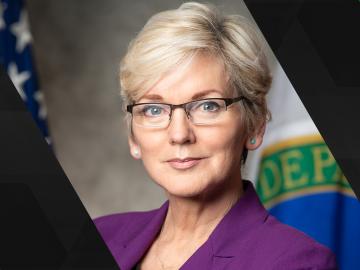
Filter News
Area of Research
- Advanced Manufacturing (1)
- Biology and Environment (23)
- Clean Energy (21)
- Computational Biology (1)
- Fusion and Fission (7)
- Fusion Energy (1)
- Isotopes (7)
- Materials (3)
- Materials for Computing (4)
- National Security (3)
- Neutron Science (6)
- Nuclear Science and Technology (1)
- Quantum information Science (2)
- Supercomputing (12)
News Type
News Topics
- 3-D Printing/Advanced Manufacturing (7)
- Advanced Reactors (1)
- Artificial Intelligence (4)
- Big Data (2)
- Bioenergy (9)
- Biology (14)
- Biomedical (6)
- Biotechnology (3)
- Buildings (5)
- Chemical Sciences (2)
- Clean Water (3)
- Climate Change (3)
- Computer Science (14)
- Coronavirus (3)
- Cybersecurity (1)
- Decarbonization (5)
- Energy Storage (8)
- Environment (23)
- Exascale Computing (2)
- Frontier (1)
- Fusion (1)
- Grid (3)
- High-Performance Computing (9)
- Isotopes (6)
- ITER (1)
- Materials (4)
- Materials Science (7)
- Mercury (3)
- Microscopy (3)
- Nanotechnology (3)
- National Security (4)
- Neutron Science (7)
- Nuclear Energy (4)
- Physics (2)
- Polymers (1)
- Quantum Computing (1)
- Quantum Science (4)
- Security (2)
- Space Exploration (1)
- Summit (4)
- Sustainable Energy (9)
- Transportation (9)
Media Contacts

She may not wear a white coat or carry a stethoscope, but Christine Walker of ORNL spends her days diagnosing the energy health of buildings and figuring out how to improve their efficiency to achieve cost savings and reduce their carbon footprint.

On Sept. 28, U.S. Secretary of Energy Jennifer Granholm joined leadership and top scientists and engineers online at Oak Ridge National Laboratory for a two-hour whirlwind tour.

For ORNL environmental scientist and lover of the outdoors John Field, work in ecosystem modeling is a profession with tangible impacts.

A team led by ORNL and the University of Michigan have discovered that certain bacteria can steal an essential compound from other microbes to break down methane and toxic methylmercury in the environment.

The daily traffic congestion along the streets and interstate lanes of Chattanooga could be headed the way of the horse and buggy with help from ORNL researchers.

A multidisciplinary team of scientists at ORNL has applied a laser-interference structuring, or LIS, technique that makes significant strides toward eliminating the need for hazardous chemicals in corrosion protection for vehicles.

Of the $61 million recently announced by the U.S. Department of Energy for quantum information science studies, $17.5 million will fund research at DOE’s Oak Ridge National Laboratory. These projects will help build the foundation for the quantum internet, advance quantum entanglement capabilities — which involve sharing information through paired particles of light called photons — and develop next-generation quantum sensors.

Anyone familiar with ORNL knows it’s a hub for world-class science. The nearly 33,000-acre space surrounding the lab is less known, but also unique.

An international problem like climate change needs solutions that cross boundaries, both on maps and among disciplines. Oak Ridge National Laboratory computational scientist Deeksha Rastogi embodies that approach.

When Hope Corsair’s new colleagues at Oak Ridge National Laboratory ask her about her area of expertise, she tells them it’s “context.” Her goal as an energy economist is to make sure ORNL’s breakthroughs have the widest possible


